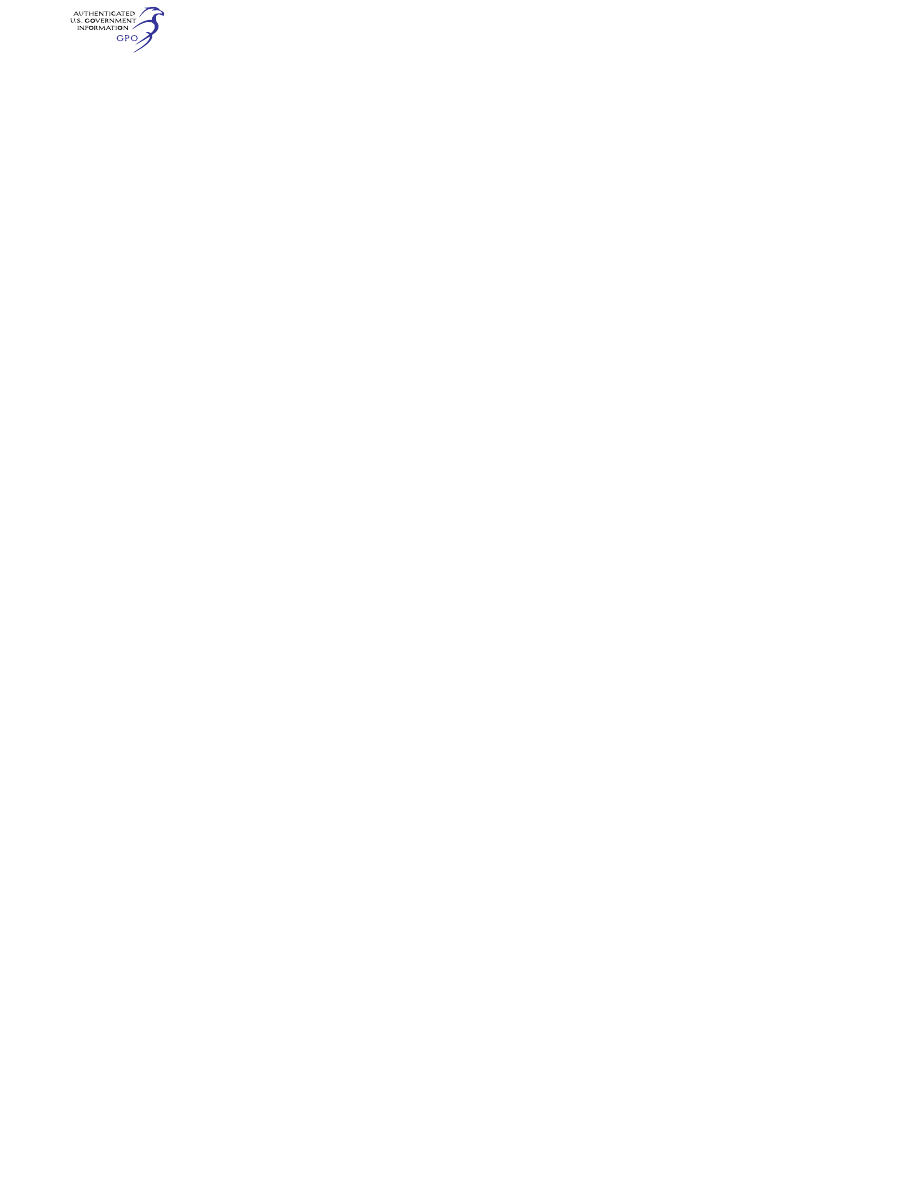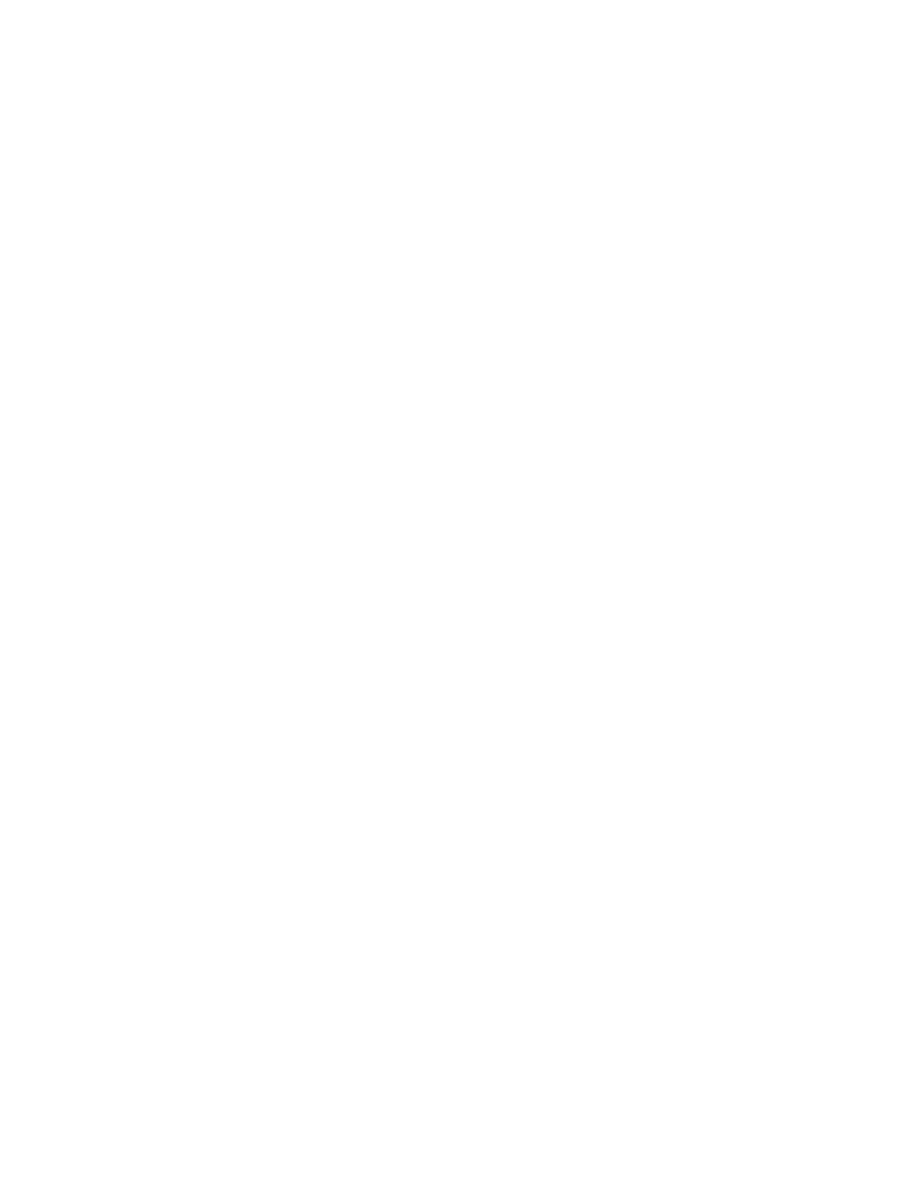
708
14 CFR Ch. I (1–1–24 Edition)
§ 33.37
permit the use of a means for ice pre-
vention.
(c) The type and degree of fuel fil-
tering necessary for protection of the
engine fuel system against foreign par-
ticles in the fuel must be specified. The
applicant must show that foreign par-
ticles passing through the prescribed
filtering means will not critically im-
pair engine fuel system functioning.
(d) Each passage in the induction sys-
tem that conducts a mixture of fuel
and air must be self-draining, to pre-
vent a liquid lock in the cylinders, in
all attitudes that the applicant estab-
lishes as those the engine can have
when the aircraft in which it is in-
stalled is in the static ground attitude.
(e) If provided as part of the engine,
the applicant must show for each fluid
injection (other than fuel) system and
its controls that the flow of the in-
jected fluid is adequately controlled.
[Doc. No. 3025, 29 FR 7453, June 10, 1964, as
amended by Amdt. 33–10, 49 FR 6851, Feb. 23,
1984]
§ 33.37
Ignition system.
Each spark ignition engine must
have a dual ignition system with at
least two spark plugs for each cylinder
and two separate electric circuits with
separate sources of electrical energy,
or have an ignition system of equiva-
lent in-flight reliability.
§ 33.39
Lubrication system.
(a) The lubrication system of the en-
gine must be designed and constructed
so that it will function properly in all
flight attitudes and atmospheric condi-
tions in which the airplane is expected
to operate. In wet sump engines, this
requirement must be met when only
one-half of the maximum lubricant
supply is in the engine.
(b) The lubrication system of the en-
gine must be designed and constructed
to allow installing a means of cooling
the lubricant.
(c) The crankcase must be vented to
the atmosphere to preclude leakage of
oil from excessive pressure in the
crankcase.
Subpart D—Block Tests;
Reciprocating Aircraft Engines
§ 33.41
Applicability.
This subpart prescribes the block
tests and inspections for reciprocating
aircraft engines.
§ 33.42
General.
Before each endurance test required
by this subpart, the adjustment setting
and functioning characteristic of each
component having an adjustment set-
ting and a functioning characteristic
that can be established independent of
installation on the engine must be es-
tablished and recorded.
[Amdt. 33–6, 39 FR 35465, Oct. 1, 1974]
§ 33.43
Vibration test.
(a) Each engine must undergo a vi-
bration survey to establish the tor-
sional and bending vibration character-
istics of the crankshaft and the pro-
peller shaft or other output shaft, over
the range of crankshaft speed and en-
gine power, under steady state and
transient conditions, from idling speed
to either 110 percent of the desired
maximum continuous speed rating or
103 percent of the maximum desired
takeoff speed rating, whichever is high-
er. The survey must be conducted
using, for airplane engines, the same
configuration of the propeller type
which is used for the endurance test,
and using, for other engines, the same
configuration of the loading device
type which is used for the endurance
test.
(b) The torsional and bending vibra-
tion stresses of the crankshaft and the
propeller shaft or other output shaft
may not exceed the endurance limit
stress of the material from which the
shaft is made. If the maximum stress
in the shaft cannot be shown to be
below the endurance limit by measure-
ment, the vibration frequency and am-
plitude must be measured. The peak
amplitude must be shown to produce a
stress below the endurance limit; if
not, the engine must be run at the con-
dition producing the peak amplitude
until, for steel shafts, 10 million stress
reversals have been sustained without
fatigue failure and, for other shafts,
until it is shown that fatigue will not
VerDate Sep<11>2014
09:06 Jun 28, 2024
Jkt 262046
PO 00000
Frm 00718
Fmt 8010
Sfmt 8010
Y:\SGML\262046.XXX
262046
jspears on DSK121TN23PROD with CFR

709
Federal Aviation Administration, DOT
§ 33.49
occur within the endurance limit stress
of the material.
(c) Each accessory drive and mount-
ing attachment must be loaded, with
the loads imposed by each accessory
used only for an aircraft service being
the limit load specified by the appli-
cant for the drive or attachment point.
(d) The vibration survey described in
paragraph (a) of this section must be
repeated with that cylinder not firing
which has the most adverse vibration
effect, in order to establish the condi-
tions under which the engine can be op-
erated safely in that abnormal state.
However, for this vibration survey, the
engine speed range need only extend
from idle to the maximum desired
takeoff speed, and compliance with
paragraph (b) of this section need not
be shown.
[Amdt. 33–6, 39 FR 35465, Oct. 1, 1974, as
amended by Amdt. 33–10, 49 FR 6851, Feb. 23,
1984]
§ 33.45
Calibration tests.
(a) Each engine must be subjected to
the calibration tests necessary to es-
tablish its power characteristics and
the conditions for the endurance test
specified in § 33.49. The results of the
power characteristics calibration tests
form the basis for establishing the
characteristics of the engine over its
entire operating range of crankshaft
rotational speeds, manifold pressures,
fuel/air mixture settings, and altitudes.
Power ratings are based upon standard
atmospheric conditions with only those
accessories installed which are essen-
tial for engine functioning.
(b) A power check at sea level condi-
tions must be accomplished on the en-
durance test engine after the endur-
ance test. Any change in power charac-
teristics which occurs during the en-
durance test must be determined.
Measurements taken during the final
portion of the endurance test may be
used in showing compliance with the
requirements of this paragraph.
[Doc. No. 3025, 29 FR 7453, June 10, 1964, as
amended by Amdt. 33–6, 39 FR 35465, Oct. 1,
1974]
§ 33.47
Detonation test.
Each engine must be tested to estab-
lish that the engine can function with-
out detonation throughout its range of
intended conditions of operation.
§ 33.49
Endurance test.
(a)
General. Each engine must be sub-
jected to an endurance test that in-
cludes a total of 150 hours of operation
(except as provided in paragraph
(e)(1)(iii) of this section) and, depend-
ing upon the type and contemplated
use of the engine, consists of one of the
series of runs specified in paragraphs
(b) through (e) of this section, as appli-
cable. The runs must be made in the
order found appropriate by the Admin-
istrator for the particular engine being
tested. During the endurance test the
engine power and the crankshaft rota-
tional speed must be kept within
±
3
percent of the rated values. During the
runs at rated takeoff power and for at
least 35 hours at rated maximum con-
tinuous power, one cylinder must be
operated at not less than the limiting
temperature, the other cylinders must
be operated at a temperature not lower
than 50 degrees F. below the limiting
temperature, and the oil inlet tempera-
ture must be maintained within
±
10 de-
grees F. of the limiting temperature.
An engine that is equipped with a pro-
peller shaft must be fitted for the en-
durance test with a propeller that
thrust-loads the engine to the max-
imum thrust which the engine is de-
signed to resist at each applicable op-
erating condition specified in this sec-
tion. Each accessory drive and mount-
ing attachment must be loaded. During
operation at rated takeoff power and
rated maximum continuous power, the
load imposed by each accessory used
only for an aircraft service must be the
limit load specified by the applicant
for the engine drive or attachment
point.
(b)
Unsupercharged engines and en-
gines incorporating a gear-driven single-
speed supercharger. For engines not in-
corporating a supercharger and for en-
gines incorporating a gear-driven sin-
gle-speed supercharger the applicant
must conduct the following runs:
(1) A 30-hour run consisting of alter-
nate periods of 5 minutes at rated take-
off power with takeoff speed, and 5
minutes at maximum best economy
cruising power or maximum rec-
ommended cruising power.
VerDate Sep<11>2014
09:06 Jun 28, 2024
Jkt 262046
PO 00000
Frm 00719
Fmt 8010
Sfmt 8010
Y:\SGML\262046.XXX
262046
jspears on DSK121TN23PROD with CFR

